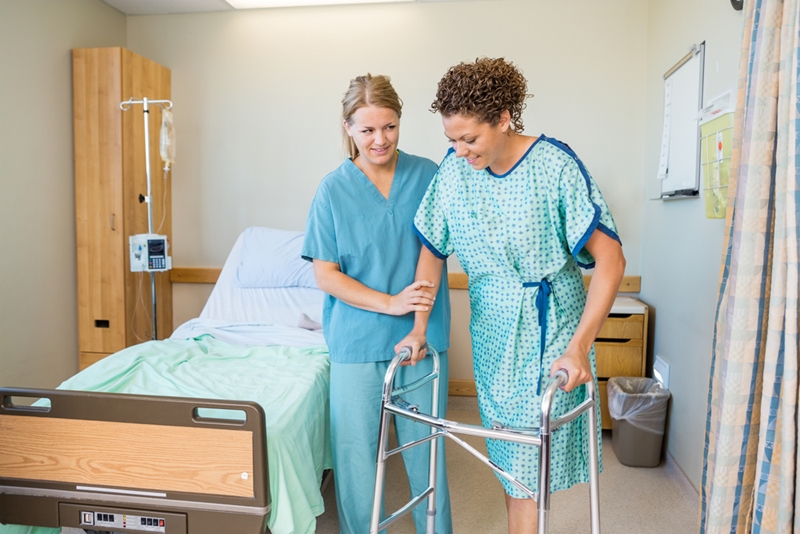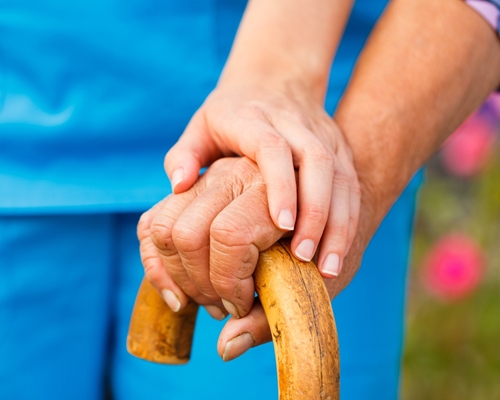The last time you and another care giver lifted a patient, what was running through your mind? If “getting the job done,” came before “move this patient safely,” it could be a sign that your health care organization is in need of a cultural change.
Not-so-safe patient handling
Did you know that over the course of an eight-hour workday, the Occupational Health and Safety Administration estimates that the average nurse, orderly and other care staff will lift 1.8 tons worth in patient transfers? That’s slightly more than a female white rhinoceros, according to the World Wildlife Foundation.
That job doesn’t come easy, either. Lifting boxes is simple—you pick them up, and put them down. But humans, both young and old, can sometimes be combative or resist. It’s a risky task that often goes overlooked by managers. But as OSHA reported in 2007, direct-care workers suffered musculoskeletal disorders at a rate of 252 per 10,000 workers, or seven times higher than the national rate among all occupations. The source also reported the direct and indirect cost of these types of injuries reach $20 billion annually, making them a top financial risk factors for employers.
“There’s no safe way to lift a patient.”
In a National Public Radio interview, William Marras, director of the Spine Research Institute at Ohio State University, gave some stark news for the patient care industry after having conducted a study that monitored nurses’ spines while lifting patients.
“The magnitude of these forces that are on your spine are so large that the best ‘body mechanics’ in the world are not going to keep you from getting a back problem,” Marras told NPR. “There’s no safe way to do it with body mechanics.”
It’s clear that change is needed, because if employees aren’t safe, it’s not a far stretch to say patients aren’t either. A back spasm could mean an elderly person is unexpectedly dropped. With patient care being of the utmost importance, isn’t it time to take another look at how “safe” your organization’s patient handling is?
Turning the page
First, nurses, orderlies and health care workers need to understand what’s a safe weight to lift, and what should be avoided. The National Institute for Occupational Safety and Health reported that 35 pounds of weight should be the maximum amount. This is because muscles start to deteriorate in strength as people grow older, and the average age of a nurse was 46.8 years old per the latest available data.
Next, get a committee of employees together to work with a risk management consultant to identify not only specific areas of concern in your particular health care setting, but those across the industry as well. Partnering with a risk control specialist is key in transforming the culture. Many times, organizations will take a stance on safe patient handling, but there’s little to no accountability to see it through. The third-party can keep track and intervene if both sides of the table aren’t sticking true to their word, and it helps to have someone who’s had experience in the industry.
Technology is advancing quickly, and a number of machines are now available on the market to not only help lift patients, but to give them support as they walk as well. Because many injuries can occur if a patient is hanging onto a nurse for support while walking, it shouldn’t be disregarded when revamping your organization’s strategy.
 Patients should always use equipment for stability when walking.
Patients should always use equipment for stability when walking.With the help of your risk control consultant, begin to implement safe procedure and equipment training on a regular basis. It doesn’t help to incorporate machines if they’re not used correctly. Proper lifting techniques for a variety of situations should also be part of the seminars. In the “fight or flight” situations where a patient is falling down, a nurse can quickly disregard all previous training and reach out, but this can result in a serious injury. Consistent training sessions should help remind them at those times to stay with protocol.
Communication is especially important, not only as to whether certain techniques are working but with other nurses when transferring patients as well. For instance, if you and a co-worker are the only two moving a patient, it’s imperative each of you know exactly what the other is going to do. Not to be left out, the patient should also be included in the conversation, and be informed as to how he or she will be transported.
Above all else, there needs to be an ideological change within the organization to a patient/employee safety-first type of mantra. When you have this in mind, all types of training and communications fall into place. By ensuring the person you’re moving is comfortable with the technique or machine being used, you reduce the risk of having them be combative or resist, which drastically lowers the chance for injury.
Is your organization trying to turn the page on their safe patient handling protocol? Contact us today to get in touch with a risk control consultant that can help you identify the best steps to take.
Share this Post

